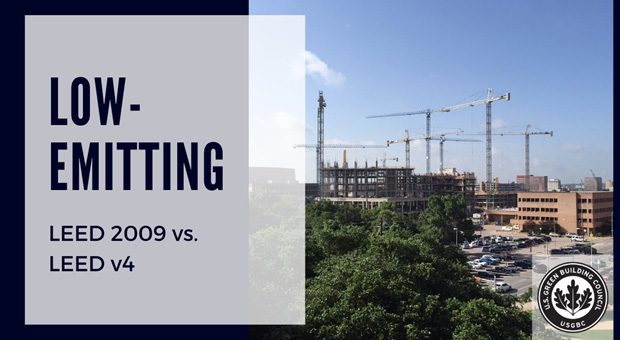We have all heard the idea of “going green” and “sustainability”. It’s in the news headlines, it’s on the products we buy, it’s in our everyday activities, and it’s clearly not going away. LaForce is always trying to evolve with the constant changes and expectations…and there are big changes in the Leadership in Energy and Environmental Design (LEED) program.
There are currently two versions of the LEED program being used by building owners: LEED 2009 and LEED v4. The certification levels and points are the same for both versions of LEED. Points are earned by processes used and product selections from the design phase of a building to occupancy to reporting after completion and use.
Certified = 40 to 49 points
Silver = 50 to 59 points
Gold = 60 to 79 points
Platinum = 80 to 110 points
However, there are differences between the two ratings systems. Below, we focus on which sustainable criteria wood doors relate to within the LEED rating system, the credits associated with the criteria, and the differences between the credits in the LEED rating systems. LaForce has developed a series of blogs on this. Low-emitting projects are the newest focus as they deal with the chemicals and various materials that are involved in a given project. How are projects considered to be “low-emitting”? Read below!
Low-Emitting
In relation to LEED 2009, projects can receive one point when all composite wood and agrifiber products used on the interior of a project are NAUF (No Added Urea Formaldehyde). This is found under the credit IEQ 4.4: Low-Emitting Materials – Composite Wood and Agrifiber Products. The composite wood and agrifiber products must be considered NAUF in order to earn this credit. Finally, documentation includes verbiage on the vendor’s LEED statement which indicates the wood doors are NAUF.
In contrast, within LEED v4, points are earned for the number of categories achieved. There are seven different categories to choose from and a maximum of three points can be earned for New Construction. However, there are two categories within the seven for wood doors to help achieve these points. The first category would be Composite Wood, meaning the wood doors are ULEF (Ultra-Low Emitting Formaldehyde) or NAF (No Added Formaldehyde). This is usually documented on the vendor’s LEED statement. The other category is Ceilings, Walls, Thermal, and Acoustic Insulations. The wood doors must satisfy CDPH (California Department of Public Health) Standard Method v1.1-2010. Documentation is a certificate from the vendor by a valid certification program such as SCS Indoor Advantage Gold-Building Materials or UL GreenGuard Gold. The certificates must indicate the exposure scenario used to determine compliance as well as stating the range of total VOC’s (volatile organic compounds) after 14 days. One major difference between LEED 2009 and LEED v4 as you may have noticed is that NAUF is no longer acceptable in meeting the Low-Emitting requirements of LEED v4.
Contact LaForce for more information on how we can help your building go green!
Thank you to Laura Waterman, Manager of Administrative Support and LEED Certified, for providing her expertise for this blog.



Follow Us